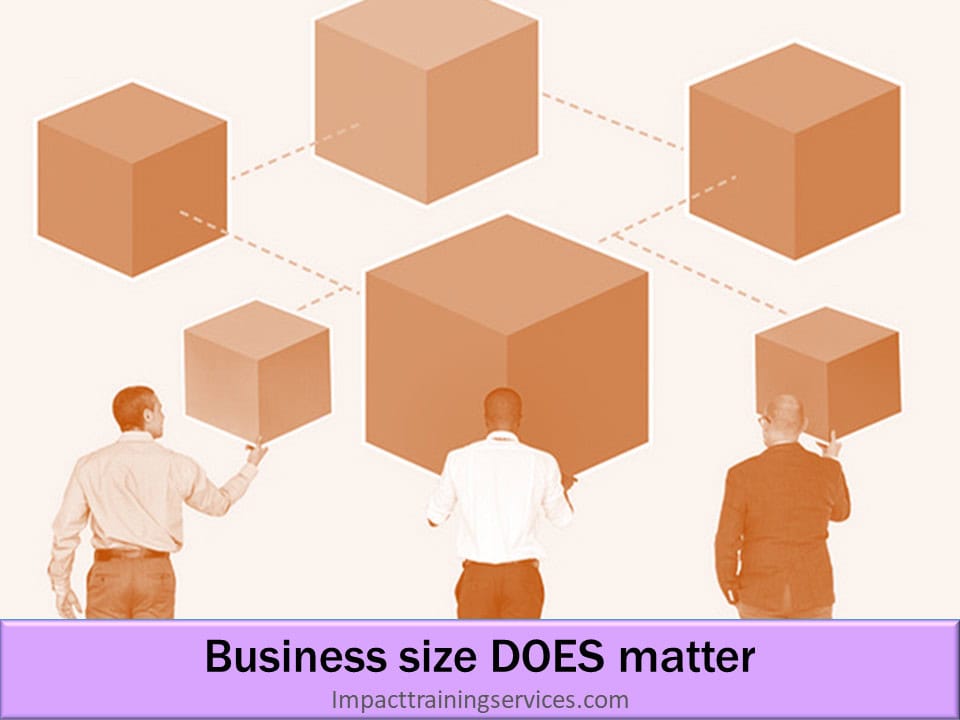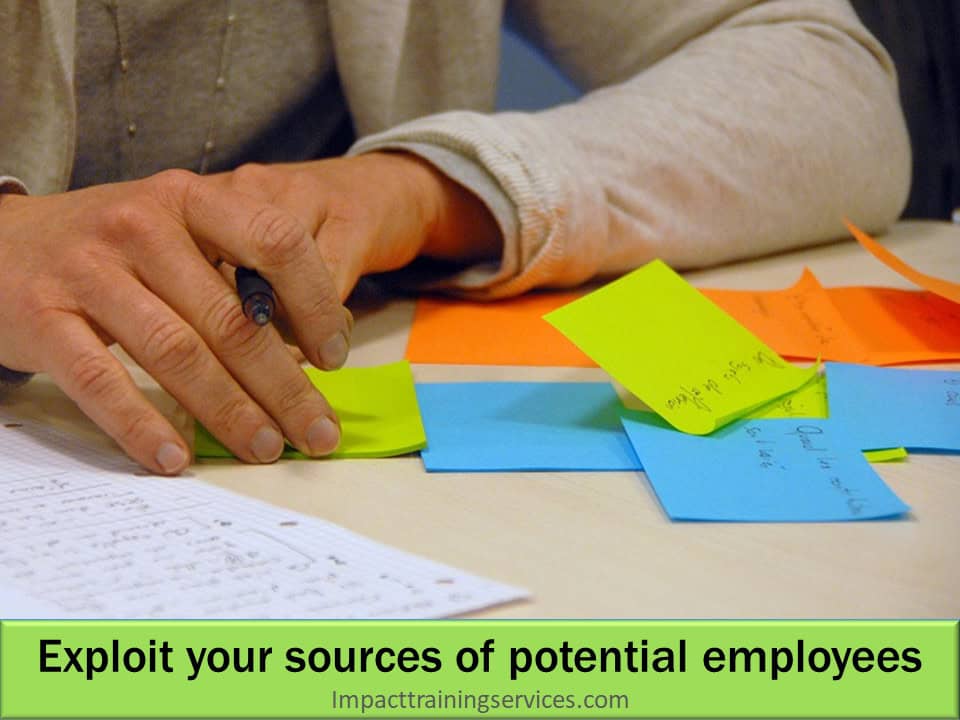How To Hire “Right” So You Won’t Stupidly Fire “Wrong”
- Home
- How To Hire “Right” So You Won’t Stupidly Fire “Wrong”

Do you know what’s the second biggest problem I see among the small business owners I work with?
Give up? (Tut-tut! You give up too easily…)
It’s not knowing how to hire “right”.
Of course, now you want to know what’s the biggest one. Can you guess it?
It’s using a bad approach to fire an employee you didn’t use a good method to hire, in the first place.
You simply would not believe how often this happens and you would not believe how preventable it is either.
Here’s an example of how bad the situation is.
At the time of writing, according to the US Small Business Administration, there were nearly 30 million small businesses in the United States employing 47.8 percent of US workers.
But does hiring more means you know how to hire right?
Apparently not.
Because, according to Guidant Financial, small business owners reported a significant 15% increase in challenges with recruiting and retaining employees.
And… as stated by Bloomberg writer Karen Klein bad hires are costly, and they can sidetrack your company’s growth.
So, is there anything you can do to hire good people and keep them in your business? Yes, there is.
11 strategies for how to hire right
Here are 11 strategies that will work for you and best of all, you can start using them right now – BEFORE you hire your next employee. Furthermore, you now have one more business solution. How cool is that?
- Remember that business size DOES matter
- Link your business model to your HR needs
- Ensure that your business has the right culture
- Before you try to “hire right” check to see if you’re a good boss
- To hire right, be able to describe the job you want done
- Describe the person you want to hire – but be flexible!
- Use an application form to improve selection
- Hire right – Learn how to “crack the resume code”
- Fearlessly exploit your sources of potential employees
- Take the interviewing process seriously when you “hire right”
- Don’t fall down on the on-boarding process
1. Remember that business size DOES matter

I know you know, that all businesses are NOT created equal.
This is even truer when you are hiring.
Big businesses will have a single department, sometimes bigger than your whole business, which is responsible for hiring the right people for their businesses.
Before you allow your little heart to bleed with envy, let me warn you, they often end up with serious misfits. However, their advantage is, they have the money to ease them out quietly and start all over again.
They also have budgets in sizes that you don’t. A selection pool that is much bigger than yours. And they can offer attractive salaries and enticing perks that you can’t.
You, on the other hand, depend on getting the word out among family, friends and colleagues. They have the unenviable task to find you that super employee to help you grow your business.
That’s why with your size, you have no choice but to be creative in the process and try to get it right the first time.
2. Link your business model to your HR needs

If you understand nothing else about your business, you need to understand and leverage your business model to make you money.
Keeping it simple, let’s agree that your business model is simply how you plan to make money with your business idea.
So if your business idea is to deliver business training to high-end businesses, in deciding how to make money with that idea, you would ask yourself questions like:
- How will I find, attract and keep customers?
- How will I design and deliver that training?
- What customer service delivery model will I use?
- Will my clients come to me or will I go to them?
- What payments methods will I use?
When you answer these questions, those answers should lead you to the critical recruiting question:
Who are the right people to hire and where can I find them”
In that moment you’re linking your business model and your HR needs.
For example, since your clients are high-end, you will need employees who are comfortable in high-end surroundings. They will also need to have high levels of self-confidence and strong interpersonal skills.
3. Ensure that your business has the right culture

I am a big believer that the right culture is important in helping small businesses retain talented people as well as stand out in a crowded business space.
And I’m not alone.
James Garvin, writing for Gaebler Ventures identifies four factors you can use to decide on how best to implement a rewarding and rich culture, within your business.
His four factors are:
1. Autonomy – Allow individuals to make decisions when they are needed. Empower your employees.
2. Rewards – Create a proper metric and reward system where individuals and departments are rewarded for their specific and unique contributions.
3. Benefits – Provide benefits like health insurance, flex hours, and more. These are often more important to employees than base pay.
4. Contribution – Enable employees to make individual contributions. Remove the classic informational ladder that exists in many corporations today. You are running a small business not a small bureaucracy. Make your employees feel that they are contributing to a great cause.
As a Small Business Owner, you should really think seriously about the culture of your business. You see, the right culture is particularly important for attracting the type of employee you want.
When your business is known as a great place to work, candidates come in search of you instead if the other way around.
4. Before you try to “hire right” check to see if you’re a good boss

Perhaps this one caught you on the back foot, to use a Caribbean cricketing term.
You see, hiring right is like a good marriage. For it to work, there must be honest and careful disclosure by all the parties involved.
If you hire a good employee to work for a bad boss, just like a marriage, it will be hot at first but eventually it could end in a bitter separation.
In assessing yourself, either get professional help or use a colleague whose judgments and opinions you trust.
But even more important, be willing to accept the feedback even if it’s not what you want to hear. Be also prepared to take action to improve your circumstances.
5. Be able to describe the job you want done

If you want to bring clarity to a goal or a desire – write it down. So write down a description for the job you want done.
Now look here…the title of the job (e.g. Factory Supervisor) is not a description of the job!
Yes, you need a title but you also need a general description or summary of the job.
Example: The Factory Supervisor (FS) supervises and coordinates the activities of employees engaged in sewing, embroidering, pressing, etc of garments in the factory”
You also need to list the essential job functions as well as the minimum qualifications you would want a candidate to have.
What you now have are the basic elements of a job description. Chances are, you might not be able to write a full one by yourself so don’t be afraid to get professional help with it.
6. Describe the person you want to hire – but be flexible! 
As part of the job description, describe the type of person you would want to fill that job. This is called a person specification.
What you are describing are some of the attributes which are important to you in a person you are going to be working with.
For example, I like people who are punctual, who can and are willing to take the initiative and who can work as part of a team, when necessary.
It’s very possible that you can attract a person who has some skills which you did not specify as needed. But as the interview progresses you realise you would love to have them in your business.
What should you do?
You are small enough to be flexible…
Go back to the drawing board and come up with a new version of the job that can use these skills. Then make the person an offer they can’t refuse.
Now you know why small is beautiful…
7. Use an application form to improve selection

Depending on the state of the economy and or the way you announce your vacancy, you can attract scores of applications.
A big business may have the resources to review loads of CVs which can differ in style, content and presentation. In your business, you may be the only person available to review yours.
That being the case, an application form is your best tool to ensure that there is uniformity in the way you collect the information from each applicant.
If the form is designed properly, it gives you a method to quickly decide who stands a chance and who does not. In other words, to separate the sheep from the goat.
The application form has other good uses too.
For example, if you have a business (usually in retail) where there are a number of walk-in job seekers, having them complete an application form is kinder than just turning them away.
Furthermore, keeping these application forms create a nice data bank that you can search when you need to find an employee quickly. This lets you hire right, even under pressure.
8. How to hire right? Learn to “crack the resume code”

Some resumes make me bust out laughing and I ask myself, “people actually fall for these?”
So here are some tips to help you get started with what to look for in resumes.
1. Get past the expensive stationery and the professional layout. Instead, look for the level of detail a candidate can provide when they describe what they did in a particular position.
2. Look for weasel wording like “participated in”, “in association with” or “familiar with” which should alert you to the fact that the candidate might not have the experience they claim to have.
3. Check the references if you want to, but I don’t. Listen, who would be so foolish as to provide you with an unfavourable source for a reference? I usually ask the candidate to organise a meeting for me with a past employer and wait for the reaction.
9. Fearlessly exploit your sources of potential employees

Whatever the nature of your business, you will have many sources from which to choose your potential employees.
They will include friends, family, colleagues, existing employees and the wider job market in your particular industry.
The wider job market in your particular industry is a source of rich opportunities and at the same time, vexing threats.
Here’s an example of what I’m talking about.
I once had a small business in the retail sector and my main source of recruitment was from among young women between the ages of 18 – 25.
No problem here. Or so I thought.
After a while, I discovered that about 25% of this sector was likely to have a boyfriend or husband who was in prison, even if only for a short time.
I weighed up the cost and benefits of finding a good employee from this pool and decided I will not let this situation deter me.
I fearlessly went ahead and hired from among them but scheduled days off to coincide with prison visits, as required.
Naturally, I became the employer to work for.
Remember, a good understanding of where your employees can come from gives you a distinct advantage in the process, as you hire right.
10. Take the interviewing process seriously when you “hire right”

Interviewing is undoubtedly an important part of the hiring process. It is the method by which you decide on the suitability of a candidate.
Getting the interviewing wrong can saddle you with the wrong candidate or worse, cause you to miss out on a good one.
Before you start interviewing, you need to be very sure what you are looking for and how you will determine that a candidate has it. This is why having a job description and a person specification is so important.
Then you need to develop a set of questions you will ask each candidate so that you can have some objective criteria at least as a starting point. This is especially necessary if you’re hiring “talent” or for a management position.
Asking the right questions is important but so is asking them right.
For example, inexperienced interviewers might ask a candidate “which religion are you?” That’s a “no-no” for a number of reasons. Most of the the time, you really want to find out “are you available to work all the business’ opening hours?”
That’s why it’s so important to learn how to interview as part of your goal to hire right – even before you start to hire. Or, you can outsource to a professional, especially if the job is important.
Just remember that when you outsource, reserve the right to make the final hiring decision. After all, the person will be working with you.
11. Don’t fall down on the on-boarding process

Can you imagine going through all that it takes to spot the right people and hire them and then having a poor or no on-boarding process?
Hard to believe but it happens more often than you think.
So I want you to think of your on-boarding as a 3-phase orientation process that can complete your hiring process.
Here’s how it works:
Phase 1 – The Pre-arrival Phase
This happens before the candidate arrives on the job.
It involves providing the candidate with some advanced information such as operations manuals, company reports and could even include a T-shirt or key rings, etc.
Pre-arrival orientation is a unique and highly valuable approach to begin communicating with new hires.
It just cannot be beaten in creating a professional positive first impression for the new hire. In the highly competitive small business market, it also reinforces for the candidate that they have made the right decision in joining your business.
Phase 2 – Job-Site Orientation
This occurs during the first and second day on the job.
It focuses on helping the new employee understand the physical workplace (including the bathroom!)
It’s also during this phase, if you have done a pre-arrival orientation, you can discuss any unclear policies, etc. This also gives you a chance to answer any lingering questions the employee may have.
Phase 3: Job-Specific Orientation
You cannot overlook this.
Job- specific orientation takes place during the first few weeks. It addresses details such as specific duties, the job description, budgets, tools, software, and health and safety.
Alternatively, depending on the nature of the business, it can be divided and delivered in manageable information slices and tied closely to the probation period.
Please check out the in-depth steps to implement a 3-phase orientation in your business.
So now, do you know how to hire right next time?
Even as I ask you the question, I know the answer.
From now on, you will confidently select the right candidate for your jobs.
Why? Because you know the frustration you feel when a new hire is not working out. Furthermore, when things go wrong, the first thing you want to do is fire the person faster than a shot out of a gun!
But from now on, you will hire right. And why wouldn’t you?
You now have 11 practical strategies that you can rely on to help with your recruiting. And best of all, you can implement them, even BEFORE you post an ad for your next employee.
So take a deep breath and tell yourself:
It’s time to hire right…so let me get right to it!
To your hiring success…





